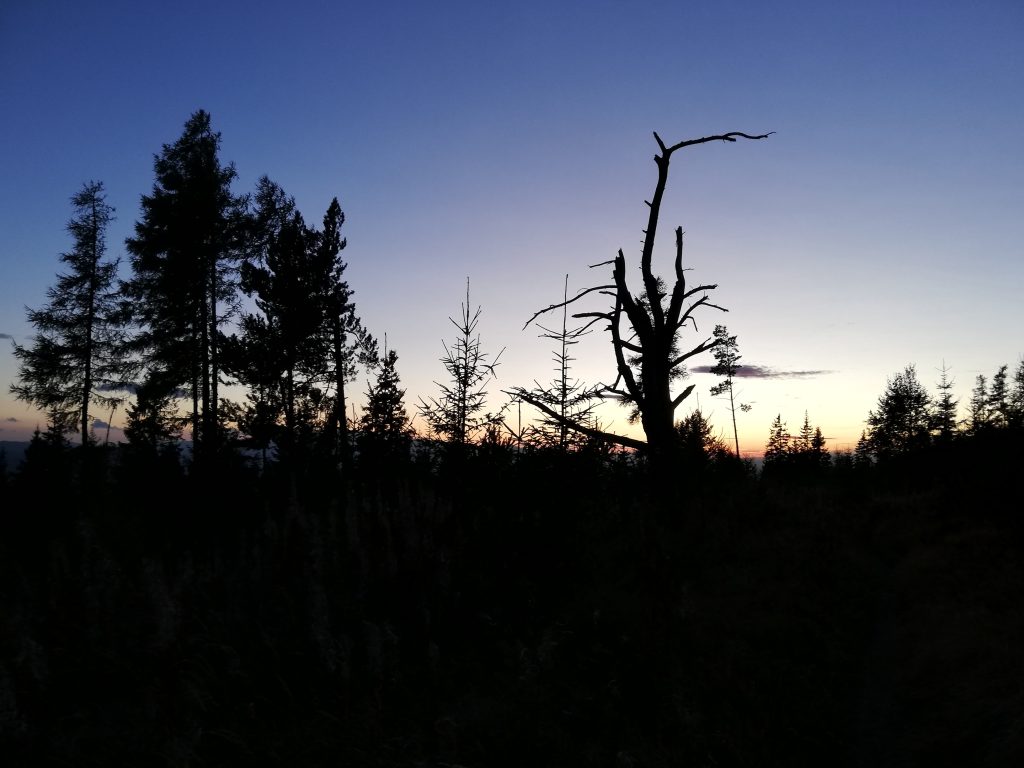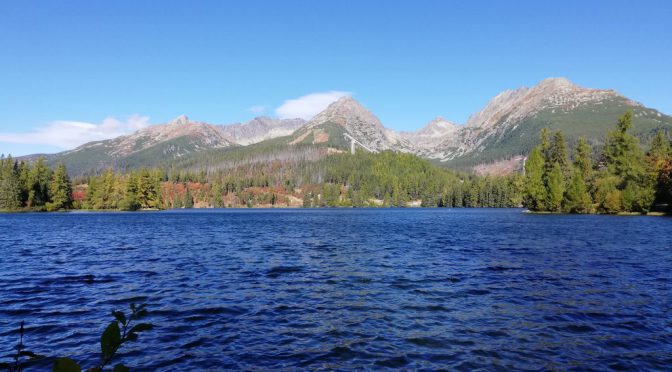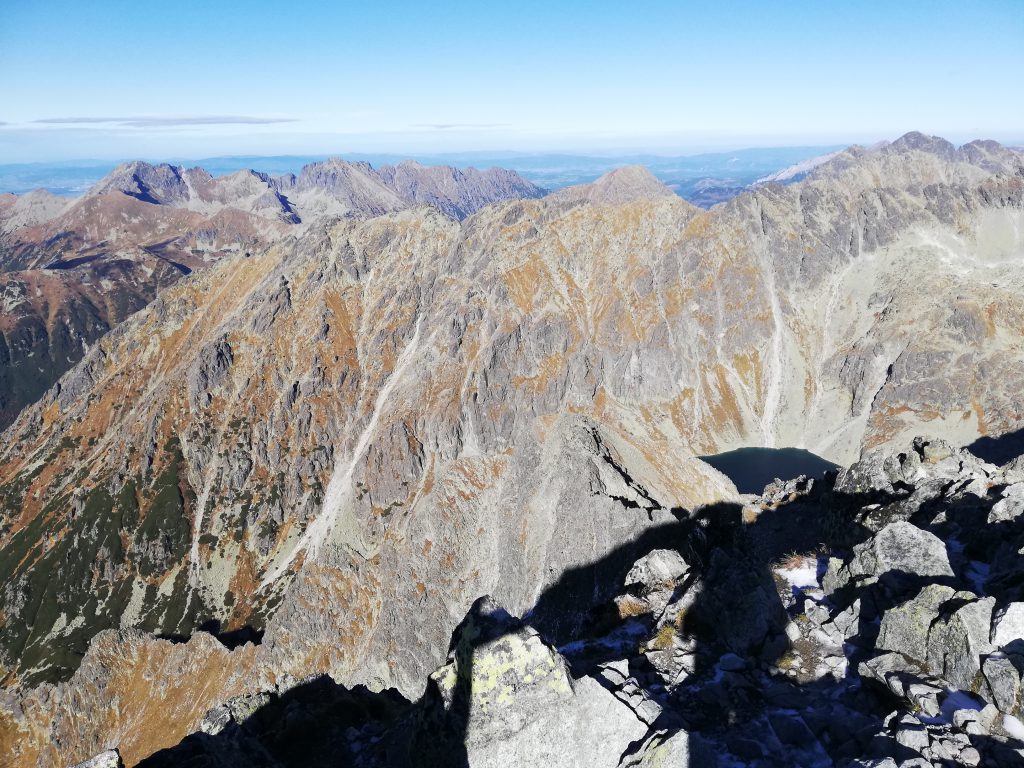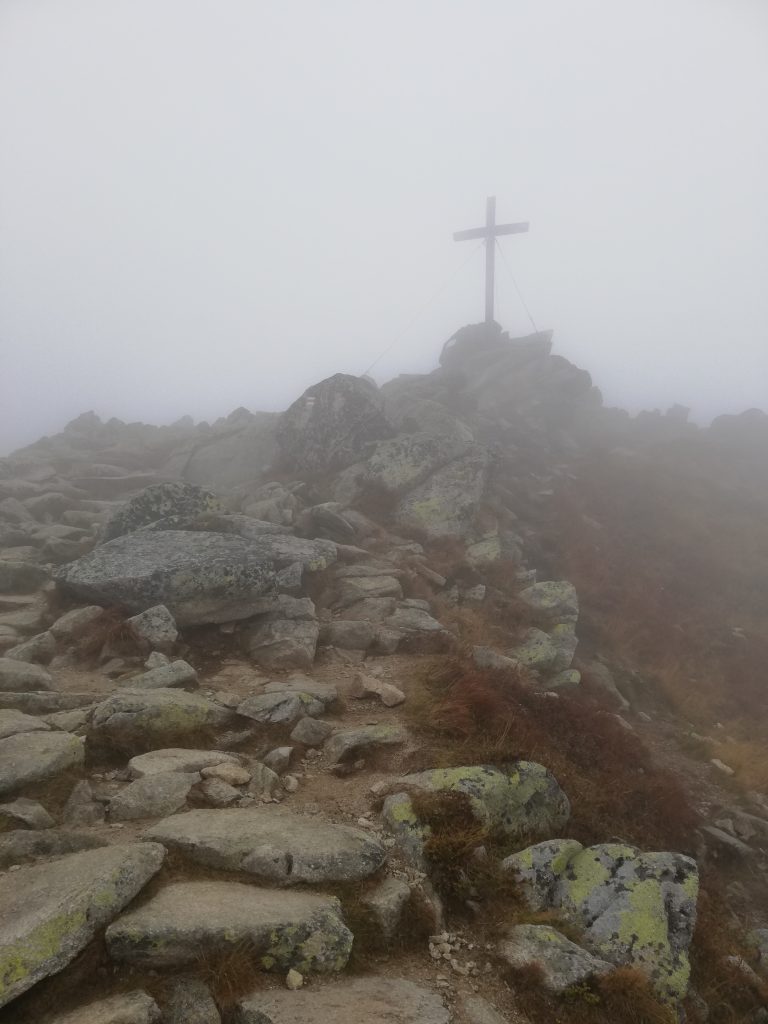Table of contents
Kriváň, October 1
Predné Solisko, October 2
Rysy, October 3
As opposed to my summer tours, I steered for the western parts of the High Tatras mountain range (not to be confused with the “Western Tatras” or “Západné Tatry”) this autumn .
The town of Štrbské Pleso, the final station of the meter-gauge railway Tatranské Elektrické Železnice (TEŽ), was my actual starting point for exploring the valleys and peaks around.
Kriváň , October 1
The ascent
The Kriváň mountain (2494 meters AMSL, i. e. Above Mean Sea Level; every height stated below is AMSL), so named because of its distinctive shape1 , is the most famous in Slovakia and a national symbol even though it is not the highest summit in the Carpathians (Gerlachovský štít is the highest with a peak elevation of 2654 meters).

Start (and finishing point) on this bright sunny day was the gorgeous Štrbské pleso mountain lake (a glacial lake), lying to the north-west of the aforementioned town bearing the same name (but with capital letter P: Štrbské Pleso).
From there (on 1346 meters) I followed the red marks westwards on the first section of the trail. Red is usually the color for long distance trails, and here the marks label the Tatramagistrale that leads across the entire Tatra foothill (and connects the principal refuges).
At Jamské pleso, a small mountain lake (1447 meters) I turned northwards on a now blue marked trail, where I started ascending the steep and treeless mountain slopes, with the impressive Važecká dolina valley on my right hand side.
On the peak (the ascent is exhausting but otherwise not really technical) you are rewarded with an expansive view to Poland in the north and onto the Low Tatras (Nízke Tatry) in the south.
On the summit
Impressions from and close to the peak on 2494 meters.

For climbing down there had been the option to take the green marked path to Tri Studničky (“Three Wells”), passing by the Grúnik peak on 1576 meters.
I decided instead to walk on the blue marked path back to Štrbské Pleso.

Predné Solisko, October 2
Climbing up this mountain (height stated either 2093 or 2117 meters, depending on the travel guide you use) was not difficult and the whole tour took about four hours in sum.

On my ascent I had a rest at the comfortable Chata pod Soliskom refuge on 1840 meters. From there it is only one hour to the peak (red marked path, here not a long distance trail). The visibility was very poor on this day due to the dense fog, unfortunately.
Predné Solisko means “Leading Solisko”, probably because it is the first peak of the Soliskový hrebeň crest.
The last or more precisely northernmost point of the crest is Veľké Solisko, which can only be ascended with a mountain guide.
Rysy, October 3
The ascent
I started once more at the Štrbské pleso mountain lake on my third day, with the goal to hike to the popular Rysy.
This mountain possesses three peaks (the highest of those three is 2503 meters, Rysy is actually a plural form), straddling the border between Poland and Slovakia.
Rysy is the highest mountain in the High Tatras that is accessible for individual visitors2 , so there do exist cairns and markings leading to the peak (a red marking beginning at the Nad Žabím potokom junction).

A few sections of the trail have ladders and other metal supports, yet even with a thin layer of snow there exist no real obstacles technically.

My tour took almost the entire day, but the reward was again an expansive view from the summit and new-made friends in the Chata pod Rysmi (“Cottage below Rysy”)3 on 2250 meters.
This refuge is the highest-located in Slovakia and quite small, but inviting and comfortable (but better avoid using that outdoor toilet).
You will very likely encounter porters during your ascent carrying supplies to the refuge, since there is no other way to feed it (barring helicopters).


On the summit
Impressions from and close to the peaks on 2500 meters.

1 some sources claim the name Kriváň stems from the Celtic word for rock; what can very well be for there are other mountains in Slovakia bearing a similar name (in the Malá Fatra you’ll find a mountain called Malý Kriváň, for instance)
2 likewise, Rysy is the highest mountain in Poland; climbing up from the Polish side is more difficult however and there is a severe avalanche threat during the winter months
3 just for the case you are interested in Slovak grammar – pod entails instrumental case, and here we need the plural form: Rysy – Rysmi
Featured image: The mountain lake Štrbské pleso














